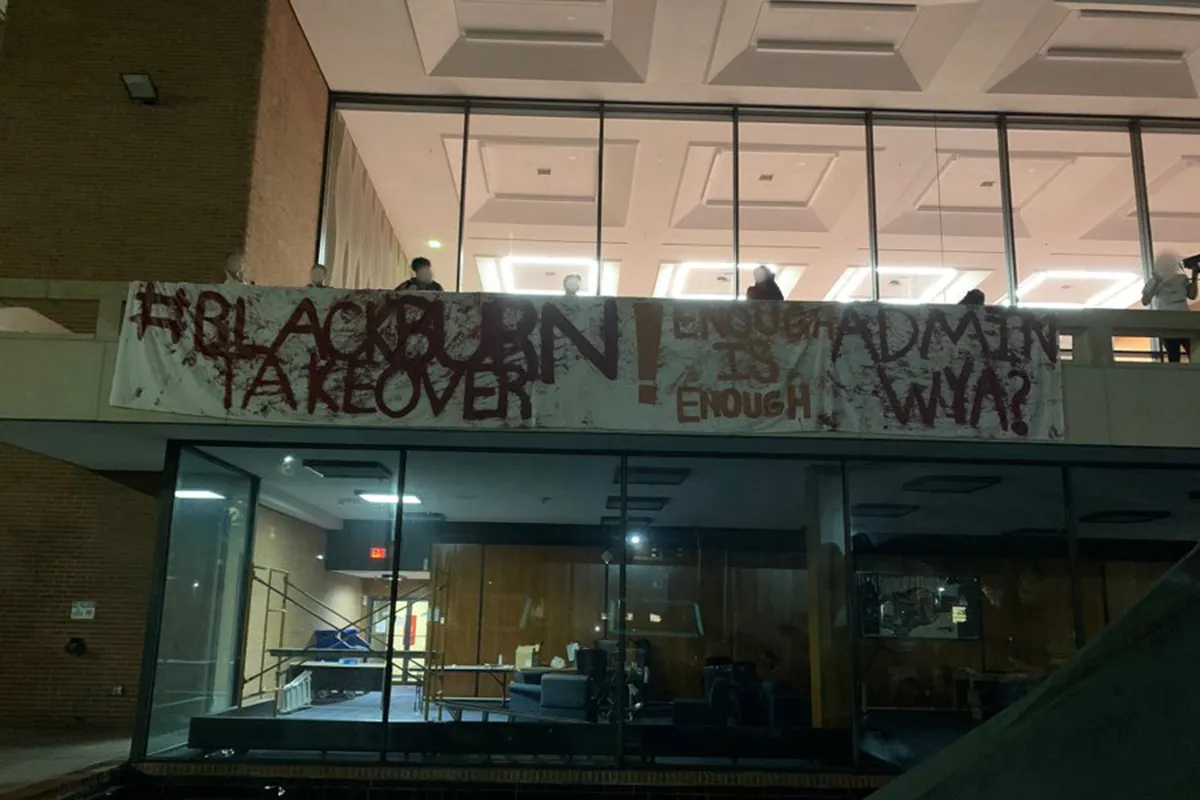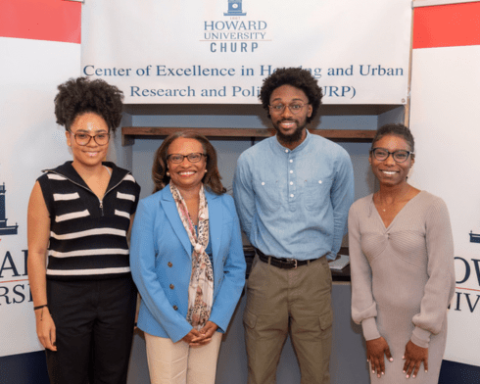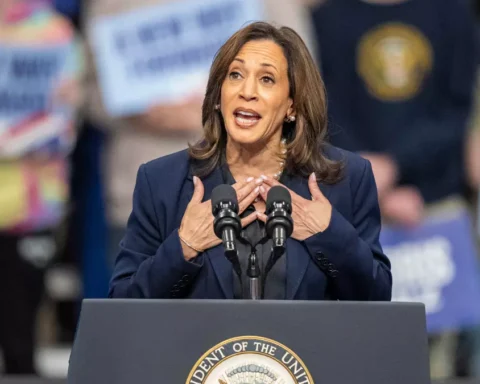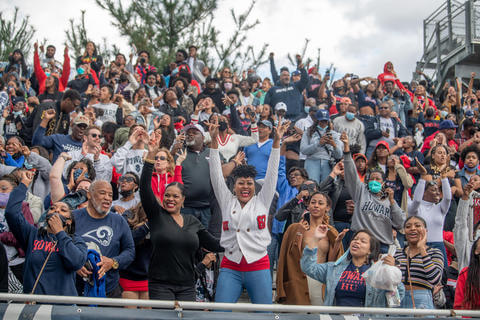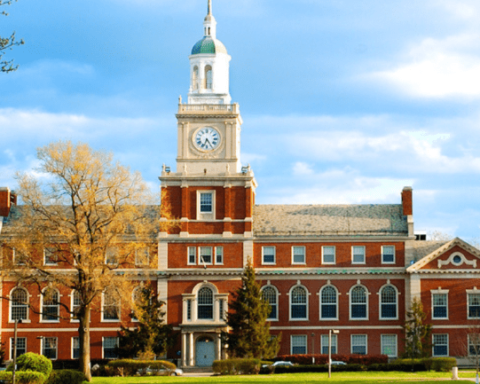By Bruce C.T. Wright,
A group of Howard University students has taken over a campus building in an effort to amplify their demands for change in multiple areas at the historically Black college in the nation’s capital.
The sit-in began on Tuesday and was continuing as of Wednesday morning after students spent the night in the Blackburn Center to get university leadership to heed their complaints about a “housing crisis” for students as well as the university’s board of trustees, among issues.
The protest sparked a viral #BlackburnTakeover hashtag that populated social media timelines with photos, video footage and first-person testimonials from inside and outside of the Blackburn Center in a demonstration of solidarity against the university administration.
According to the Live Movement, an organization advocating for Black college students, the protesters at Howard have three demands: 1) an in-person town hall meeting with Howard President Wayne A.I. Frederick before the month ends; 2) for all “affiliate trustee positions” and their voting power to be reinstated to Howard’s Board of Trustees; and 3) the board of trustees to address a “housing plan” in an effort to “protect incoming classes.”
In the end, they want an in-person meeting with Frederick and other campus leaders to directly address their demands.
Students participating in the sit-in expounded on the demands in no uncertain terms, including one who claimed a “lack of action and accountability from administration” was the reason they took over the Blackburn Center. Posters emblazoned with like-minded messages were also taped up around the Blackburn Center’s entrance.
“We are not here just to go to class. We are he to be leaders, advocates, change-makers,” Aniyah Vines, who founded the Live Movement, can be seen saying through a bullhorn from a Blackburn center balcony to a growing crowd of students outside.
Vines later spoke with Howard’s student-run news organization, the Hilltop, to offer a bit more context to the students’ demands.
Citing what she called “a long history” of HBCU administrations lacking a connection with their students, Vines said that “action” like the sit-in at the Blackburn Center is what’s going to get people to listen.”
Referring to a “housing crisis,” Vines added that she knows students who have been sleeping in their cars and using facilities at the Blackburn Center to shower.
“It’s not OK,” Vines said while also acknowledging reports of students having mold in their dorm rooms.
Vines also blamed the administration for trying to get the students out of Blackburn by pulling a fire alarm and calling city and fire officials, who she said arrived and left without taking any action because it is not a city problem.
“This is Howard’s problem,” Vines said.
She challenged Frederick to meet with students and accept their demands.
The allegations of mold in Howard’s dorms are not new. A 17-year-old sophomore documented what she said was mold in her dorm via a video that she posted to social media claiming to show flooding and resulting mold in what is supposed to be a kitchen area of the dorm room.
Thandiwe Abdullah told local news outlet WUSA last month that she recorded the video — posted on Sept. 23 — weeks after first complaining, which garnered what she described as an unsatisfactory response.
“Maintenance came, they looked into it, and no one tells us anything,” Abdullah said. “They just start ripping out the wall. They move everything out of our closet there’s mold growing on the wall in our closet.”
A video recorded Tuesday shows someone identified as a Howard University staff member refuting claims of mold in dorms.
In June, Howard made the decision to no longer have faculty, student and alumni representation on its board of trustees. The move eliminated voting power from the three aforementioned groups that previously allowed them to have a say in decisions the university made. Diverse Issues In Higher Education said that is standard practice for the majority of the nation’s private universities.
But HBCUs are not the majority of the nation’s private universities, and the backlash was swift.
“The most inexplicable part of shutting student, faculty, & alumni voices out of Howard’s Board of Trustees – is that the choice replicates the elitism & supremacy of the structures that necessitated Howard’s creation,” Paul Lisbon, a student at Howard Law School, tweeted in response to board of trustees’ “update.”
An online petition demanding student representation on the board of trustees has garnered more than 1,000 signatures and denounced the decision that it said “does not rise to the standards of excellence, leadership, service and truth that has been instilled in countless Howard generations.”
A survey taken among students last year also found that about 97% of the 2,600 respondents indicated that “definitely” or “probably” need student representation on the board of trustees.
Still, Howard went ahead with updating the structure and voting power of its board of trustees, culminating in this week’s sit-in protest at the Blackburn Center.
Howard University did not immediately respond to a request for comment.

